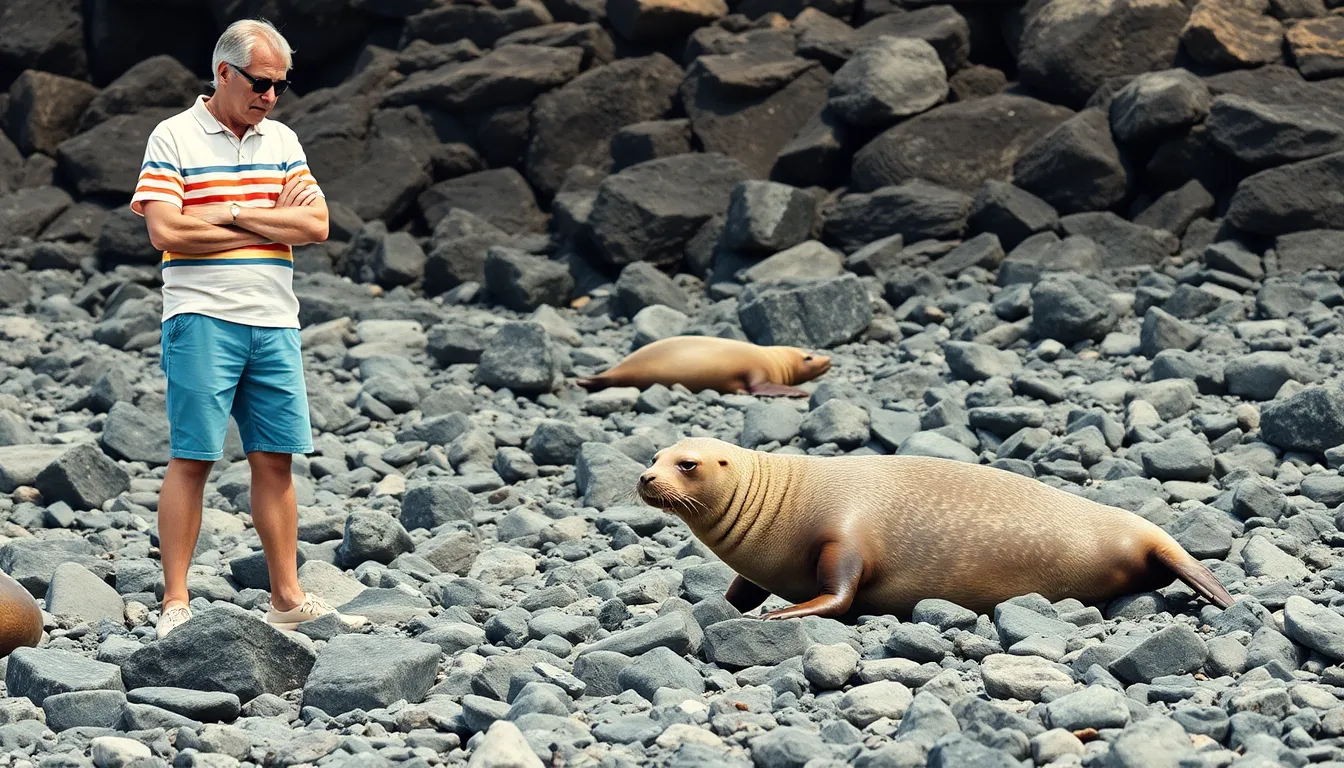Table of Contents
ToggleImagine strolling along a picturesque beach, the sun shining and the waves crashing, when suddenly you spot a seal lounging on the sand. Your first instinct might be to reach out and give that adorable creature a little pat. But before you dive in for a furry high-five, it’s crucial to know the rules of the marine playground.
Understanding Seal Protection Laws
Seal protection laws exist to safeguard marine wildlife and their habitats. Understanding these regulations is essential for ensuring respectful interactions with seals.
Federal Regulations
Under the Marine Mammal Protection Act (MMPA), touching or disturbing seals is illegal throughout the United States. This law prohibits harassment of marine mammals, including seals, to protect their natural behavior. Violators face significant penalties, including fines up to $20,000 and possible imprisonment. The National Oceanic and Atmospheric Administration (NOAA) enforces these regulations, while the United States Fish and Wildlife Service (USFWS) oversees specific seal species. Engaging with seals might disrupt their feeding, breeding, and resting patterns, harming their populations.
State Regulations
Multiple states implement additional regulations to enhance seal protection. For example, California imposes strict laws against touching or approaching seals on its beaches. Similar laws exist in Alaska, where disturbances can lead to hefty fines. Connecticut has designated specific areas as seal protection zones, limiting human interaction. States monitor these laws to support wildlife conservation efforts and preserve local ecosystems. Violating state-specific regulations can result in legal repercussions and fines, reinforcing the need for responsible behavior around seals.
The Risks of Touching a Seal

Touching a seal poses various risks for both humans and the animals themselves. Understanding these risks supports responsible wildlife interactions.
Health Risks for Humans
Encounters with seals can expose individuals to zoonotic diseases, which transfer from animals to humans. Common conditions include leptospirosis and ringworm. Close contact increases the likelihood of transmission. Seals also carry parasites that can lead to infection, such as ticks or worms. Additionally, seals may react defensively if they feel threatened, resulting in potential injuries from bites or scratches. Recognizing these health risks emphasizes the need for caution when near these marine mammals.
Impact on Seal Behavior
Touching seals disrupts their natural behavior. Disturbances may lead to stress and anxiety. As a result, seals may abandon their pups or chosen resting areas, affecting their survival. Additionally, they become less cautious around humans, increasing the likelihood of dangerous interactions. Frequent disturbances can alter their feeding patterns, leading to health issues. Understanding these behavioral impacts highlights the importance of respecting seals’ space and habitats.
Legal Implications
Understanding legal implications is essential for anyone encountering seals. Various regulations govern interactions with marine mammals, aiming to protect these animals and their habitats.
Penalties for Touching Seals
Violating regulations regarding seals can lead to serious penalties. Under the Marine Mammal Protection Act, fines may reach up to $20,000 for unlawful touching or disturbing. Federal authorities enforce these laws, conducting investigations and issuing sanctions against offenders. Specific states, such as California, implement additional fines and legal consequences. The variability in state laws adds another layer of complexity, emphasizing the need for awareness before approaching seals.
Reporting Violations
Reporting violations plays a critical role in wildlife protection. Individuals can contact local authorities or wildlife organizations to report illegal interactions with seals. Providing specific details enhances the effectiveness of reports, such as location, time, and description of the incident. Law enforcement agencies rely on community cooperation to ensure adherence to wildlife regulations. Prompt reporting helps safeguard seal populations and supports broader conservation efforts.
Public Awareness and Education
Educating the public about marine wildlife protection is vital for preserving seals and their habitats. Informational campaigns can increase awareness of the legal restrictions surrounding interactions with seals. Engaging local communities through workshops and outreach programs can foster respectful attitudes toward wildlife.
Rules such as those outlined in the Marine Mammal Protection Act (MMPA) emphasize the importance of not touching or disturbing seals. Understanding the implications of these laws helps individuals appreciate the significance of maintaining a safe distance. Notably, severe penalties exist, including fines of up to $20,000, which emphasize adherence to regulations.
Encouraging citizens to report any violations of seal protection laws is essential for effective enforcement. Local wildlife agencies often rely on community involvement for timely reporting of issues involving seals. Sharing information about the risks associated with touching seals, such as zoonotic diseases or aggressive behavior, can further discourage harmful interactions.
Complimentary educational materials, like brochures or signs at beaches, can remind visitors of respectful practices when encountering seals. Highlighting the crucial role that seals play in marine ecosystems can foster a sense of responsibility among beachgoers. Additionally, community partnerships with wildlife organizations can amplify education efforts, enhancing overall conservation initiatives.
Continued support for public awareness campaigns can cultivate respect for marine wildlife and their natural environments. Investments in education contribute to sustainable practices that benefit both humans and seals. Building a culture of conservation promotes the well-being of seals while fostering harmonious interactions between people and nature.
Touching a seal is not just discouraged but often illegal due to strict regulations aimed at protecting these marine mammals. Understanding the laws surrounding seal interactions is crucial for both human safety and wildlife conservation. By respecting seals’ space and habitats, individuals contribute to their well-being and the health of marine ecosystems.
Promoting awareness and education about the risks and legal implications of touching seals can foster a culture of respect and responsibility. Engaging with local wildlife organizations and reporting violations ensures that seal populations remain protected. Ultimately, maintaining a safe distance from seals is essential for their survival and the preservation of marine environments.




